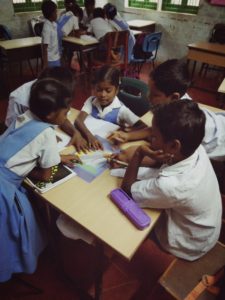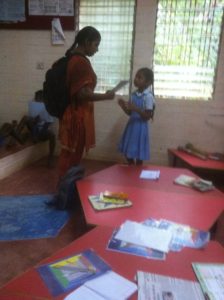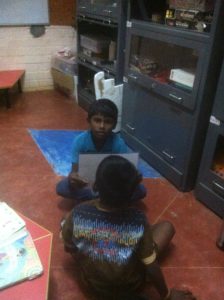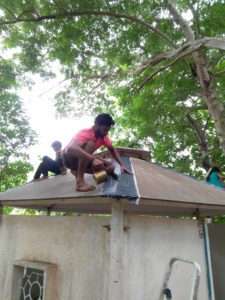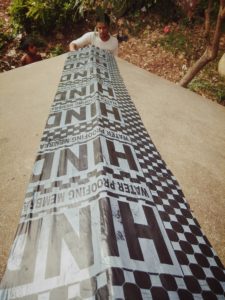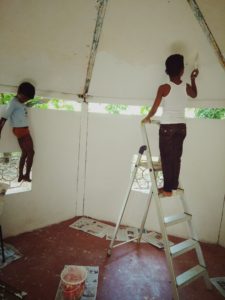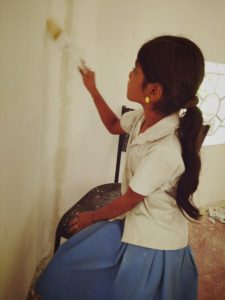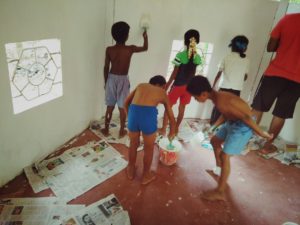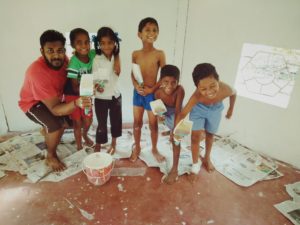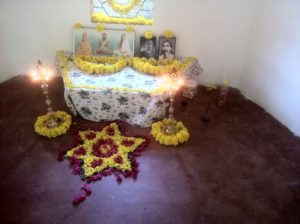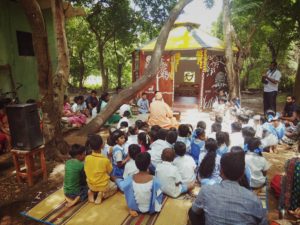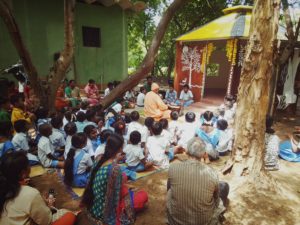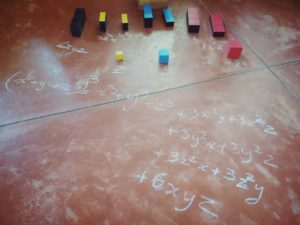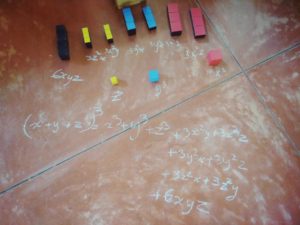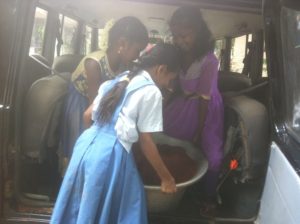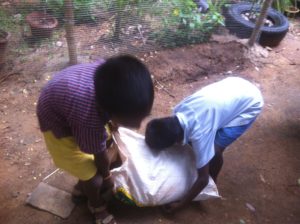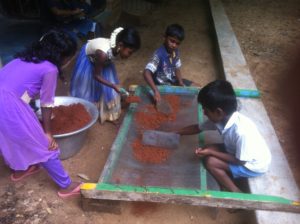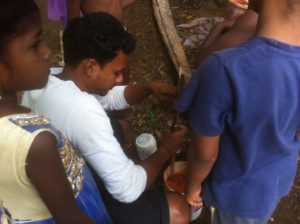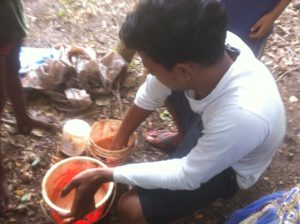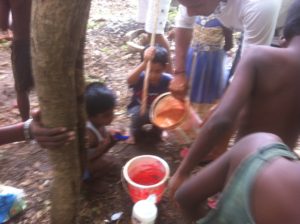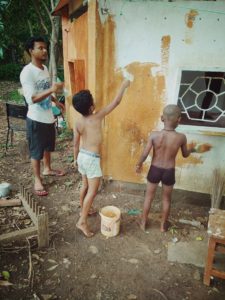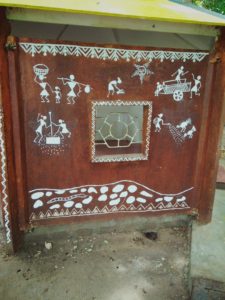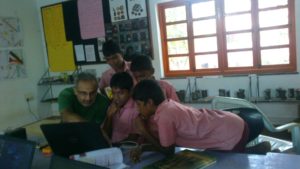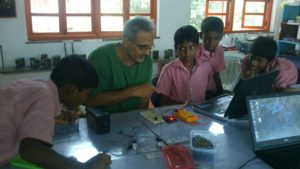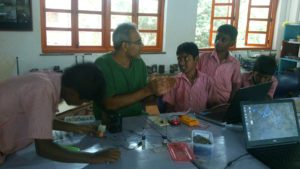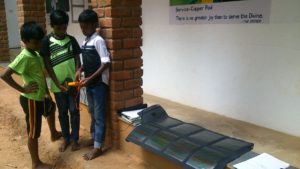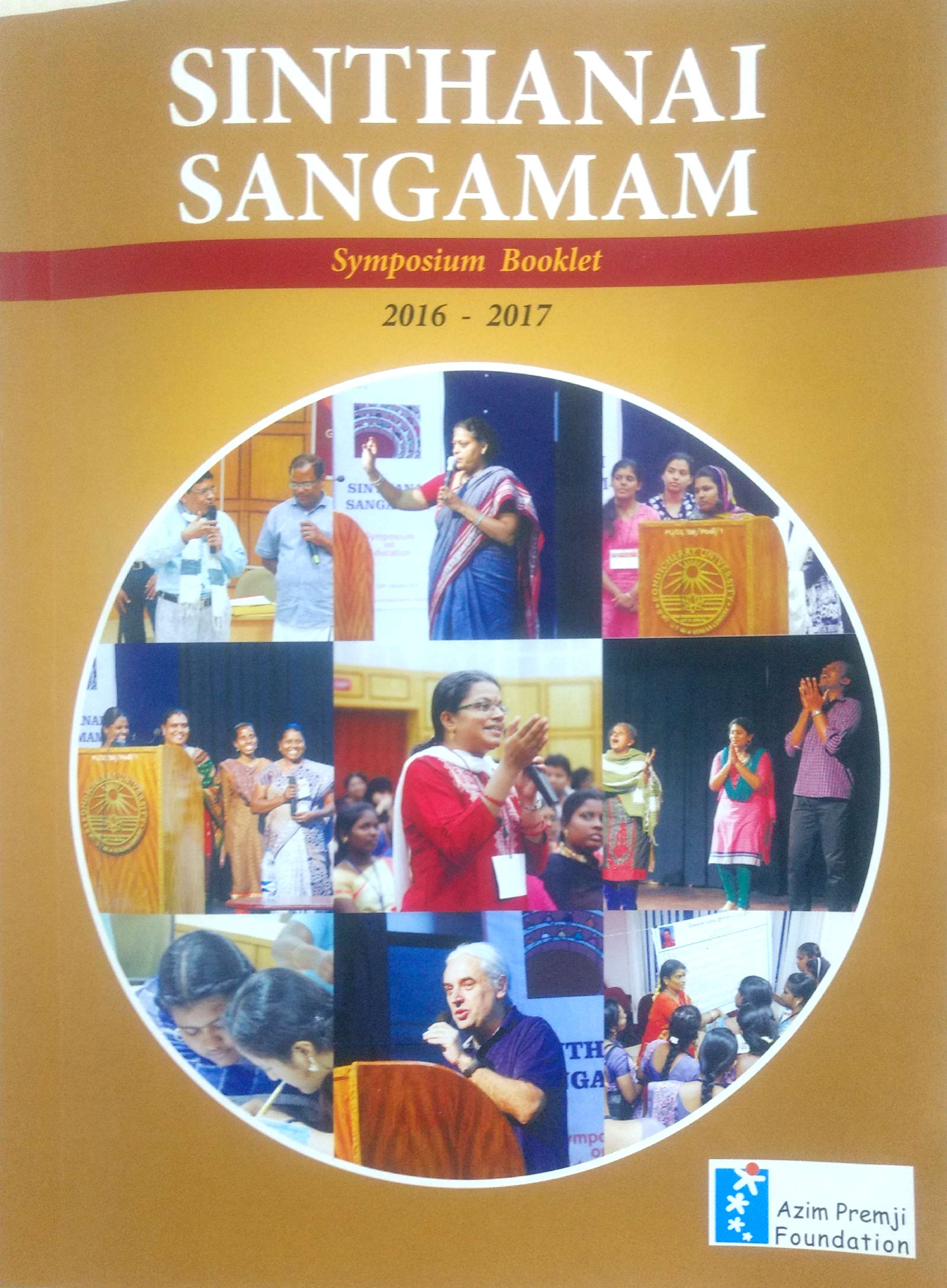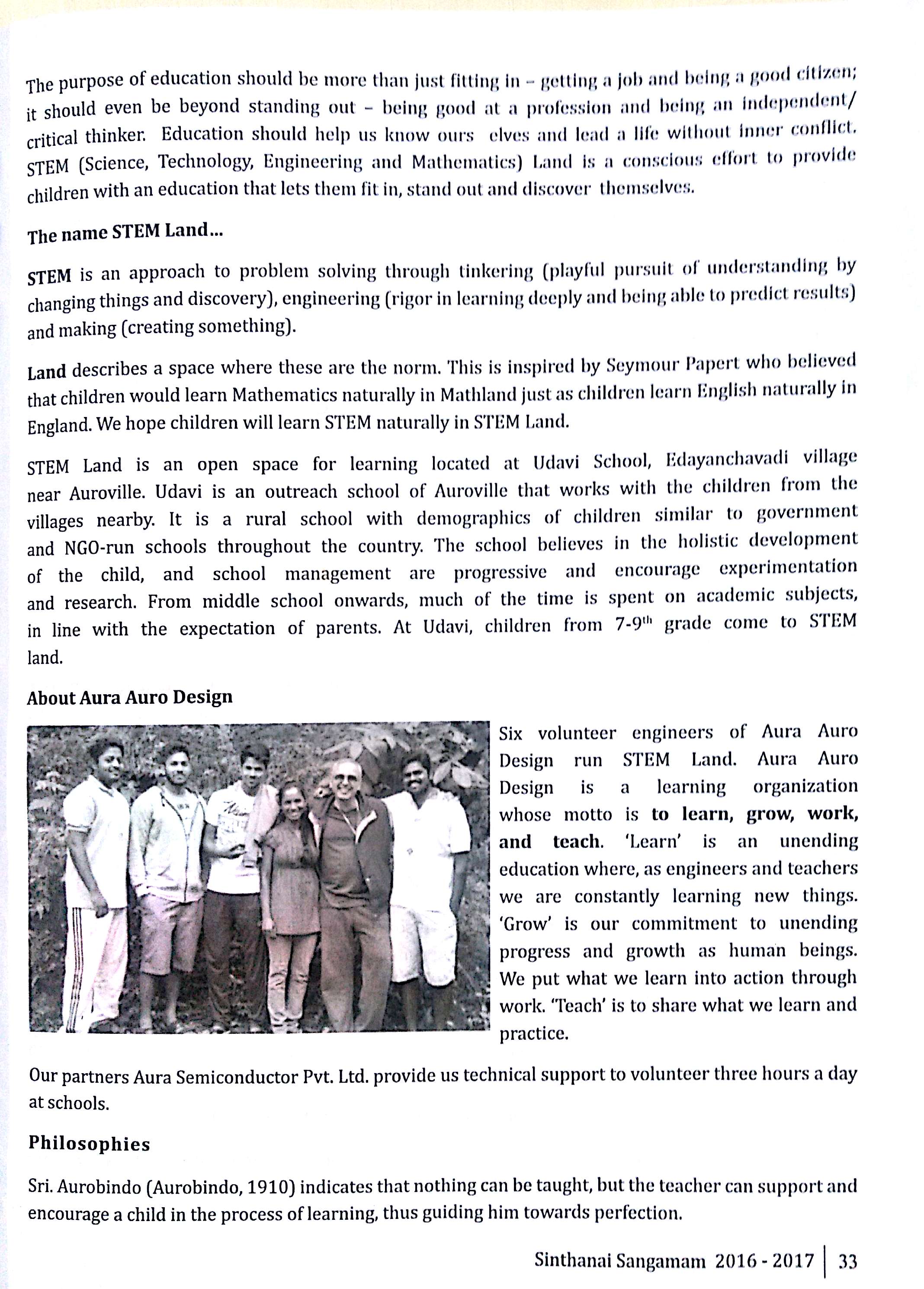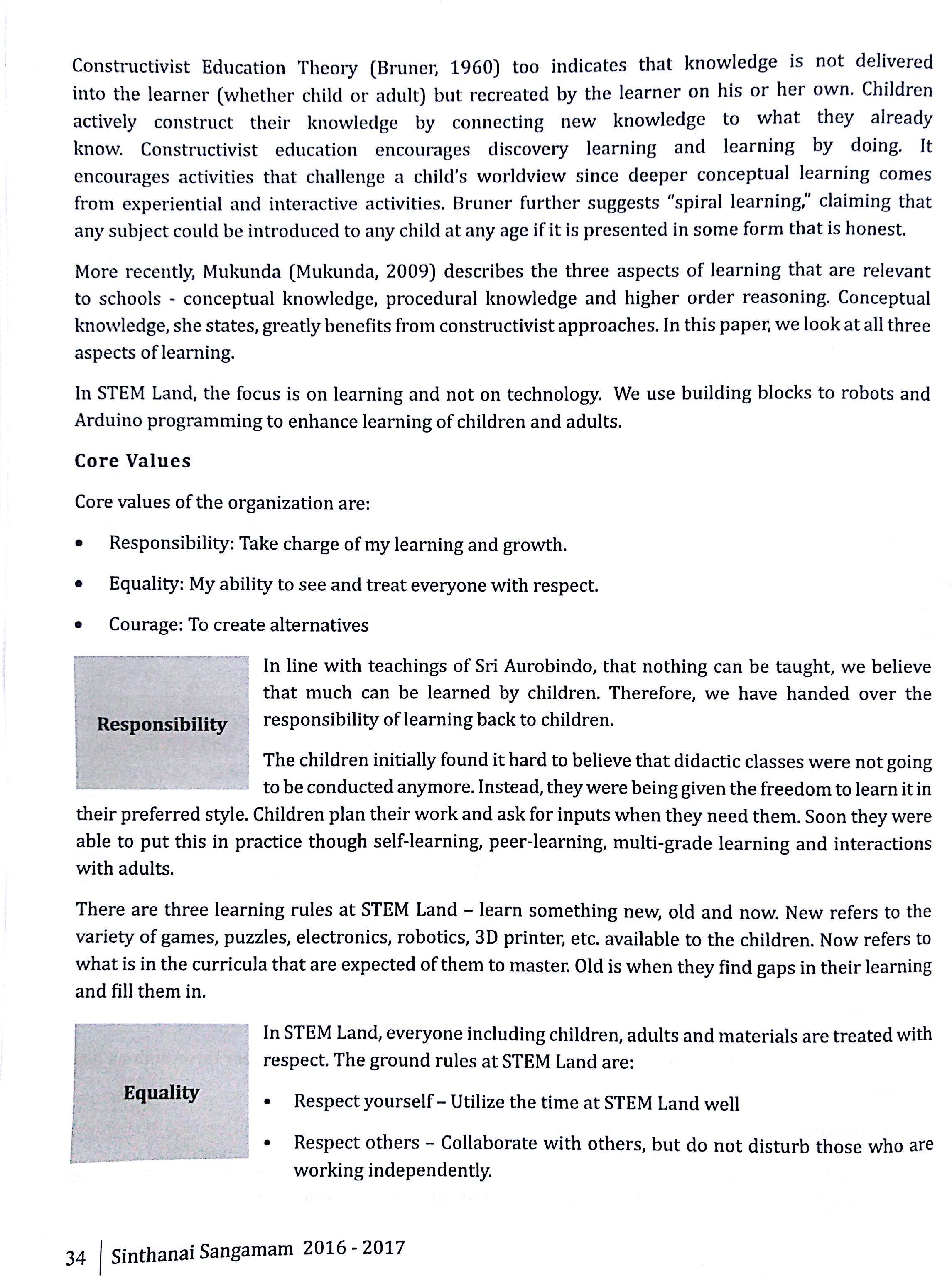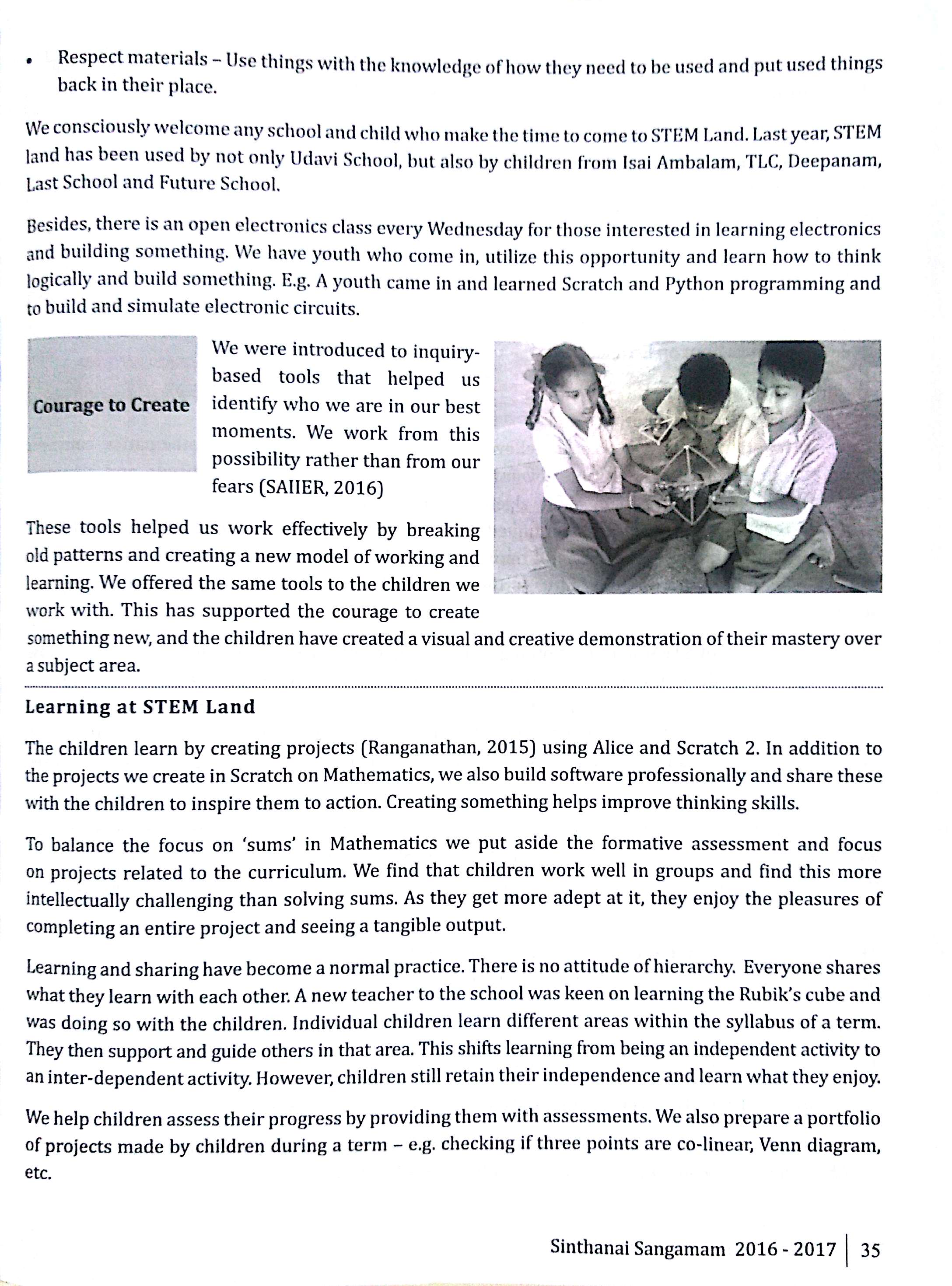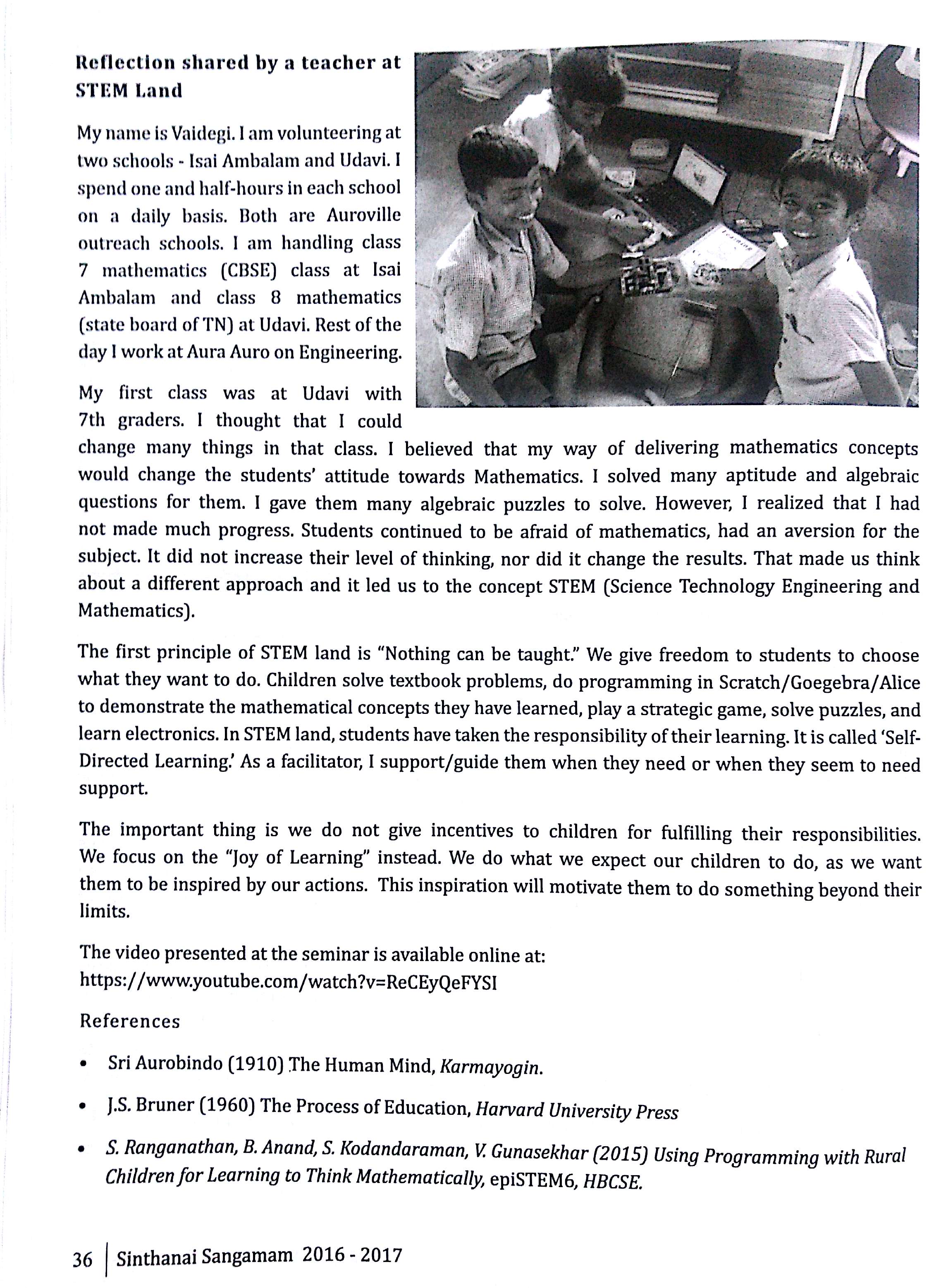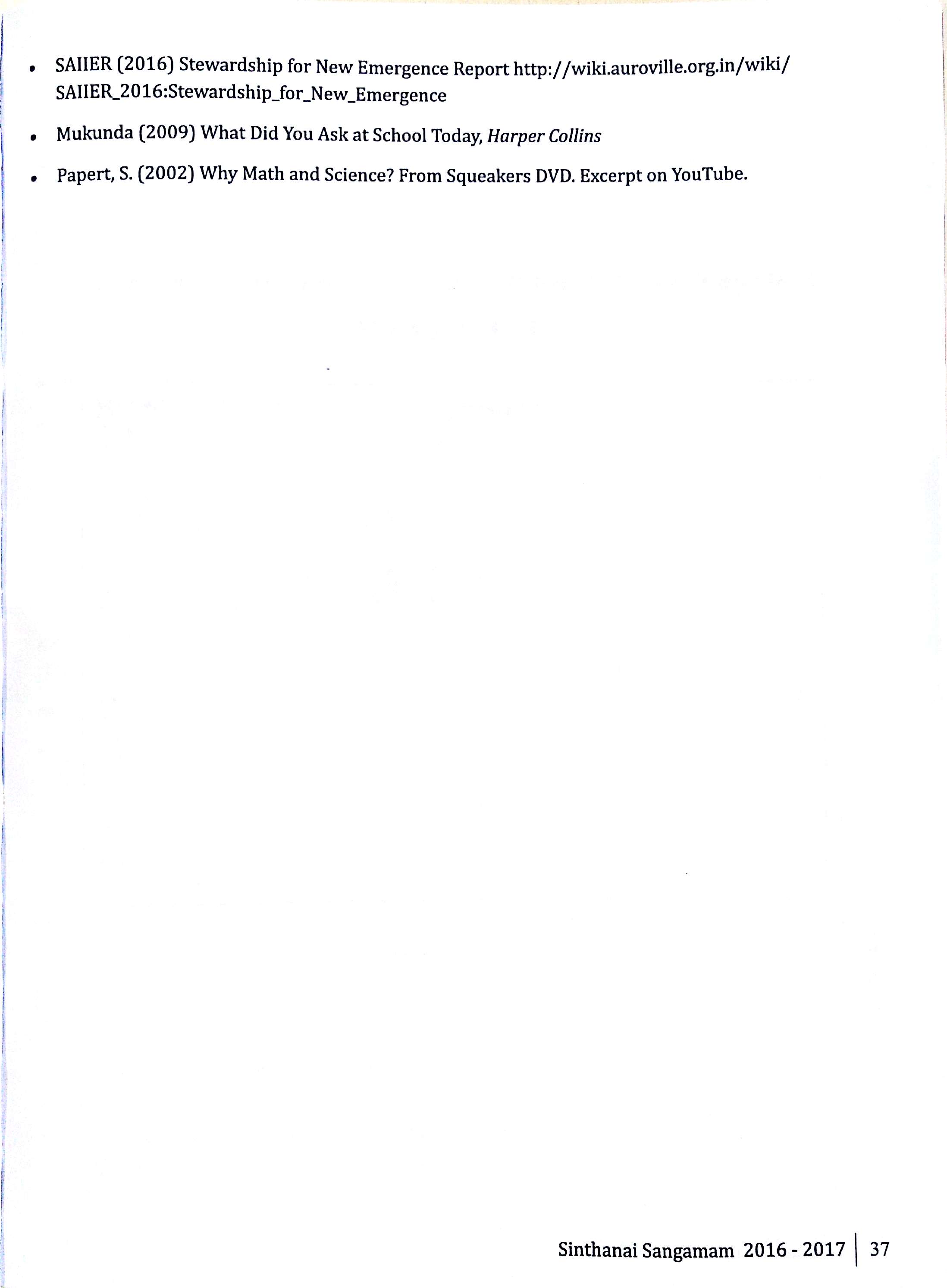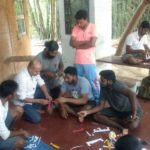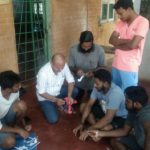During Maths class children were having difficulty in telling tables quickly. Our children were able to tell tables in order but it was difficult when it was random. So we started using Vaughn cube. Vaughn cube is a set of videos which help children to tell tables quickly. We started using the it with 3rd and 4th graders. At first children felt interesting. It middle they felt it was boring because the videos were so long. Then we started to use cards that has been taken from the video. when they started with 3 table they couldn’t tell the number or answer in 3 table. Later when they started noticing the pattern. They when i asked some question they use to tell the object that is present between two number. Once they know all the object they use to jump here and there to tell the answer. They really felt happy that they were tell all the tables from 1 – 10. To tell the tables they need to know 28 objects. Next they need to know between which number certain object should come . Once they knew that they were able to tell tables. If we follow the instruction in the video it will be boring. Vaughn cube should be used in short time and if extended for long time children feels boring. Children wont wait for the teacher to ask the tables. They them self pair together and ask tables in random order.
Story of minus into minus is plus & programming for the same
Children from 8th were learning algebra and had difficulties with the sign operations. They were able to come up with stories of multiplying minus into plus, plus into minus and plus into plus but they couldn’t come up with a story of minus into minus. They asked the volunteers and facilitators to tell a story for it but they couldn’t get the right story for it. Sanjeev gave a story and explained how negative value multiplied with negative value becomes positive. Children even tried the story on the staircase. They closed their eyes and walked backward (negative) and facing down the staircase (negative) and when they opened their eyes they saw themselves climbed few steps up(Positive). They were excited and were able to implement it on their algebraic equations. They had fun while learning it. 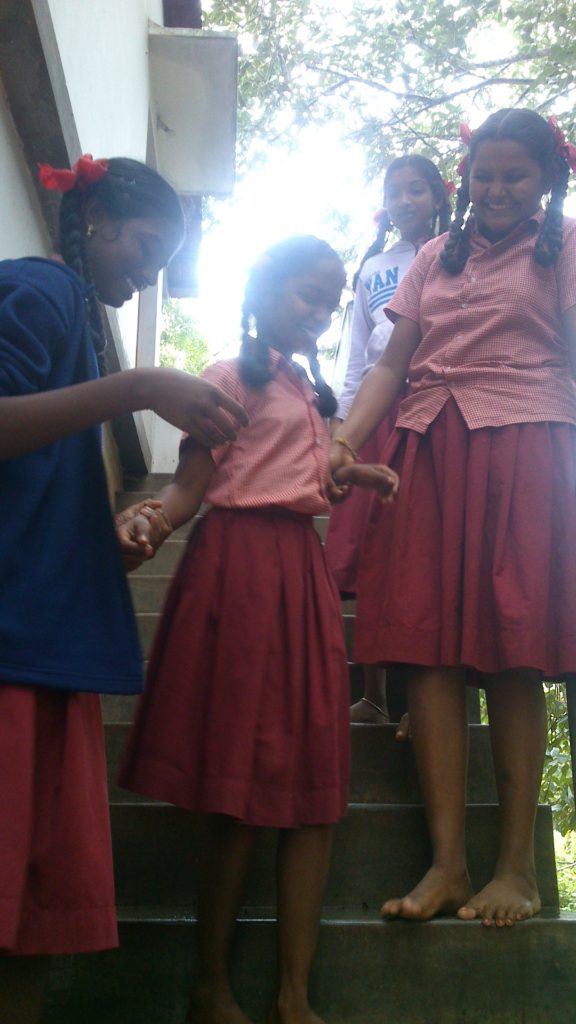
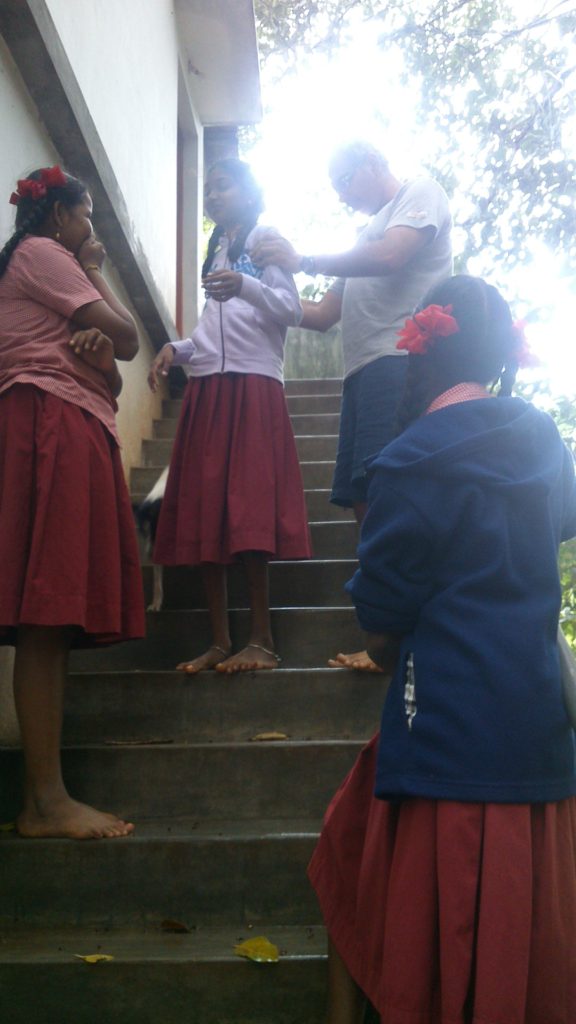
Goanimate story:
Scratch program that randomly takes two numbers and does the same story.
link to scratch code: https://scratch.mit.edu/projects/296602417/
Inauguration of clay room
Roof:
The Roof was built with slabs that were attached together with bindings, and sealed off with some material that had become torn and corroded. Thus making rain water seep in. The solution was covering the cracks with tar sheets. Naveen had got the excess sheets from the repair works at Aura Auro Design’s Lab. He also got a Flame thrower that was antique 😉 (We along with the children had a time figuring out how to light it up) It was a manual tool we had to compress air and it would send out a mixture of kerosene and air that would burn. eventually 🙂 . The children started to measure and cut out the tar sheets from a roll. Naveen and the children placed the sheets and heated them to stick on the roof with the flame thrower.
We hope this will prevent rain water from seeping in. The roof was then painted with a bright yellow oil paint. We bought 6 liters of oil paint. Children started painting during their sleepover. It took two evenings to paint 2 coat of painting on the roof.
Painting Inside:
Inside:
The room was now ready to be inaugurated on Sri Aurobindo’s birthday. We had as our chief guest, Swami Sarvasahananda from Ramakrishna Mission, Chengalpattu. He graced our space with his blessings, talk and music. That morning the school was abuzz with activity. Children had stayed over the previous night to participate in the dawnfire meditation. When we came from there, we were working on decorating the clay room. Garlands were made, photos of Sri Aurobindo, Mother, Sri Ramakrishna, Sarada Devi and Swami Vivekananda were decorated. Lamps were kept ready for the opening. Children with help from their teachers got the PA system ready. The harmonium and tabla were arranged. Gopal from Mantra pottery joined us that morning to do clay work. It was a session that children and adults enjoyed. The Swamiji lit the lamp and invited the teachers to do the same. Once the lamps were lit, we all connected with the Divine Mother through songs that the Swamiji and children sang. For those who could remember how forlorn the room had been, it was touching to see how the same little room was shining with all of us invoking the Divine.
As one of the facilitators in creating our clay room, I witnessed the transformation of a space we had neglected over the years into a bright space that we look at every day. That we can transform our environment with one-pointed concentration, team-work, openness to learn, consecration of our work to the Divine are learnings that will stay with us and reveal themselves to us as and when we are ready to understand them.
When I was working with the children in the clay room I learnt to be patient. Involved all the children and gave equal opportunities to all the children. Learnt team work from the children. I saw sharing and caring from the children while working as a team for my self and for others.
(x + y + z)^3 Visualisation
Quadcopter Quadcopter
In STEM Land 9th std children were very eager to do the Quad copter. They wanted to do something different which inspires themselves as well others. We are building an i-smart class room and the 9th std children wanted to paint the room themselves so they stayed the night at the school and painted the room. After the painting they saw a Movie called October sky. By seeing the Movie children got inspired and first thought of building a rocket, but then settled down to build the quadcopter. They felt that since they are in 9th std and would be busy next year with the board examinations they should make full use of STEM Land this year and do something interesting. They thought of it and came up with an idea of making a Quadcopter. They started researching online and looking at videos and worked out the parts they needed to build a quadcopter.They took a DVD and carefully cut it with equal sides and placed the RF control receiver board, four motors and their propellers on it and soldered them. Children used the Big shot camera battery from STEM Land and connected it to the receiver. While connecting the battery and the receiver a pin broke.They traced the pins and soldered connectors and fixed the problem. They figured out to connect the transmitter with the receiver by keeping the transmitter and the receiver so close to each other and pressed the button and waited for few seconds and connected it. They were so happy and eager to finish it and were working on it even during their break. They have almost completed assembling the Quadcopter and now they are working on it to make it fly. Currently it hovers a few cm from the ground before loosing contact with the transmitter. The 8th and 7th children were also looking at it enthusiastically and enjoyed.
Clay room
Painting Outside:
Third graders took responsibility to paint outside. This being a room for clay and woodwork, we wanted to paint it with a natural brownish red-soil color. We inquired with a few painters and once they understood our idea, they all suggested extracting the color from red-soil and binding it with Fevicol. Children in 5,6 and 7 stay over in school on Wednesdays. One Thursday morning, we went with pands and mumpties and collected red soil.
Once the soil was on hand, the third graders sieved it. Water was added to the soil and mixed well. This had to be filtered to extract the color. For the filter, we used some of the cloth bags we receive in grocery stores that don’t use plastic any more. We tool 4 liters of the red-soil water and mixed it with 2 liter of Fevicol. Fevicol made the paint thick. We painted the wall and as it dried up, the wall looked beautiful with hues of orange, red and yellow. We wanted a darker shade since we planned to paint patterns on the wall inspired by Warli art. So for the next coat, we added some brown water color that was on hand. A lovely dark shade was the result. The room is hexagonal giving us six panels to paint on. Over a few evenings after school, teachers and students painted patterns on the wall. We have a panel with a tree and a deer on a full moon night. One more with the Matrimandir, Banyan tree and children visiting there. Some of the paintings did not come well and we painted over them to create a fresh new wall to paint over.
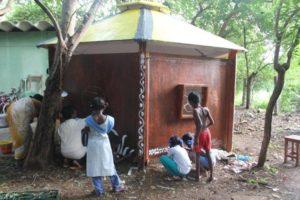
Wooden Torch in Isai STEM land
In Isai Ambalam school children waned to make different types of lights to use it during sleep over. It took 2 to 3 weeks to build a nice wooden torch. So they started cutting the bamboo during STEM land period. Once they cut the bamboo they started to build the circuit on a bread board and then started soldering with wires. Then they made hole in the bamboo with a drill to fix a switch. Then for the front part they really wanted to use some cone shape and to fix the LED. At first they use a waste water bottle. They cut the bottle and took the cone shape but it didn’t last for long time. It also didn’t look good. Then they were struggling with chart paper to make a head for the torch. Then students got some ideas like that what all can be made with bamboo. Some wanted to build a study lamp. These things were made 4th and 5th grades. Three girls thought it is very difficult to build a torch. When some students started to build a study lamp these girls got inspired and they also started to build a torch. When they finish making the torch Monica came to visit STEM land they presented this torch to her. Monica gave a beautiful words for those kids. I also added a image with the words from Monica. 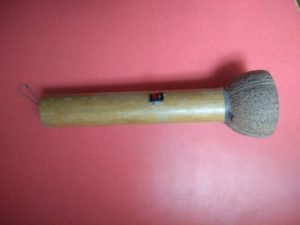
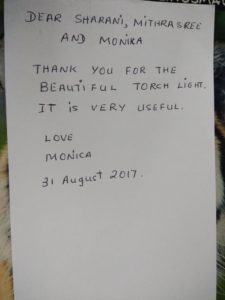
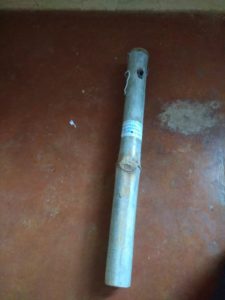
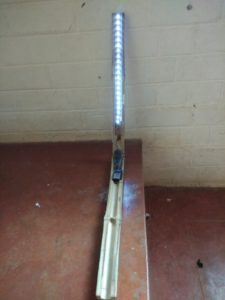
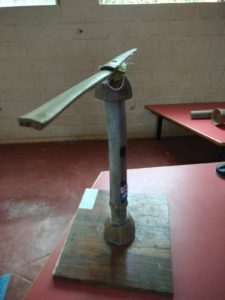
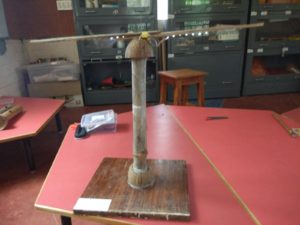
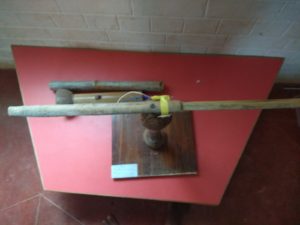
Rain maker
In Udavi, Students have activity class once in a week and some of the children choose STEM land as an activity class. Last Friday we had activity class with 7th and 8th graders. Children wanted to do very interesting project so they thought of a problem that they face in the school. They have gardens in the school and they water the garden daily. But during the holidays one of them had to come the school and water their garden. So they came up with an idea of watering the garden automatically came up with an idea of making a rain maker for their gardens. We learned how a relay works and also about the water solenoid valve. We tested the valves that we had in STEM Land by connecting it to a 12V battery and connected the valve to a water pipe and tested it. Luckily all three valves worked. Then we connected it to the Arduino and programmed a simple blinking program and tested by changing its delay. This Friday we learned to charge the 12V battery using the solar panel and we measured the current that we get from the solar panel. when there was bright sun we got around 0.41 A. Next week children will solder the circuit on the PCB and will implement it on the garden.
Sinthanai Sangamam
Link to PDF : Sinthanai Sangam
Kirigami and Origami – Bala & Sundar
We had a visitor named Ravi Alugnati a very respected resource person in Math and Science languages and also does puppetry hands on activities. He showed us some of the things he had built in Kirigami We made different shapes both in Kirigami(cutting paper) and Origami(olding paper) with his guidance. The 8th and 9th graders of Udavi and some children in Isai Ambalam also enjoyed making different shapes. I found Origami little bit tougher than Kirigami as the steps to build a shape/object is more complex. I also got a feedback from him about my teaching when I was taking class for the 3rd graders in Isai Ambalam. The feedback was useful.
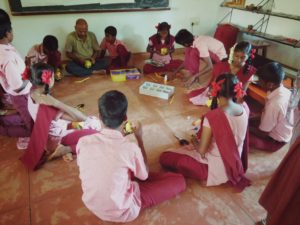
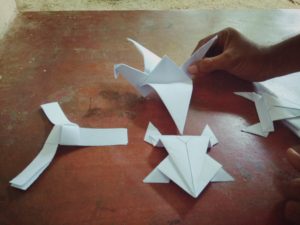
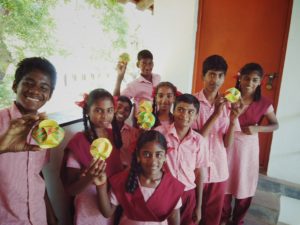
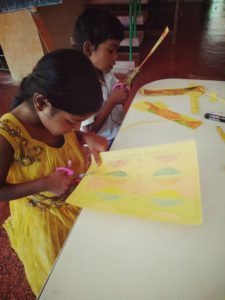
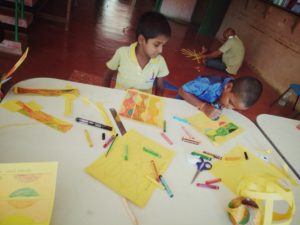
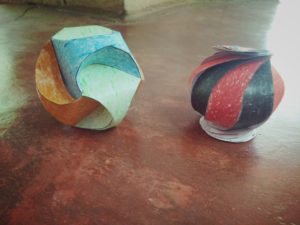
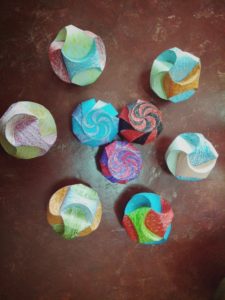
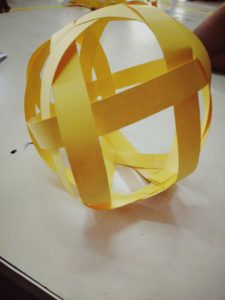
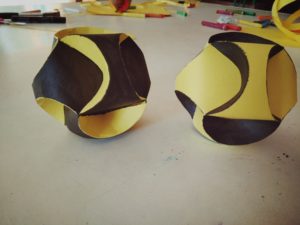
We started of by creating a ball that included folding of paper and interlinking different pieces. Shiva(teacher at isaiambalam school) and Pranav (Volunteer at STEMland) had jointed the workshop. During these sessions everyone was very focused, and figuring out how to link the different pieces together to form the object.
Ravi had also brought with him 3D shapes that personally dazzled me there where cubes that could be rotated and would again reform the cube.




